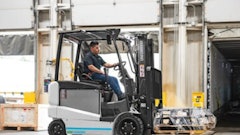In researching my article Construction in 2011 for the January issue of Rental, I had the privilege of corresponding with numerous industry leaders about where the future is leading the construction and equipment rental industries. Most experts agree that 2010 was slightly better than 2009, but everyone wonders if we can count on the rebound to continue. What are the problems we need to contend with before we can feel comfortable that the rebound is sustainable? Even more importantly, what are the questions the finance companies and bankers are going to want answers to before they become comfortable lending again? Rather than attempt to predict the future, following are some questions we all need to ask as we look into the future of the rental industry:
Are banks and financing companies going to continue to be so restrictive in their lending practices that rental companies will have trouble buying the equipment they need? And will the lack of available financing cause rental businesses to hang on to more used equipment?
Will manufacturers be willing to support financing by either doing it themselves or by providing first loss support to the rental companies' finance partners? And will this even be enough for what the growth demand could be if the market rebounds drastically?
Commodity prices are sure to climb in a world market that is already over heated in Asia and South America. With a rebounding North America and Europe, what are OEMs going to do when the market prices for steel and other necessary components in construction equipment jump to as much as two times their current price? Who will get hit with increases the hardest -- OEMs, distributors or end users? Or will it be all of them? Can the increased costs further restrict the rebound?
We know that certain types of equipment will bounce back earlier than others. Will the early demand for earthmoving equipment as well as replacement service trucks and delivery equipment updates cause the shortage of available funds to be worse on the products that come later in the rebound cycle? Will this make used equipment more important in those areas?
Are we looking at a supply model and financing environment where we'll see more and more "de-contenting" of products in order to keep the original price down to something less expensive? Will this type of product be acceptable to end users?
If all of these issues create a "new normal" for the rental industry and the players in it, will we see more and more Asian OEMs coming to the United States and Europe with financing in hand, and copied machines that cost considerably less than their American and European predecessors? Will those prices put even more pressure on rental rates?
Finally, what will the United States and Europe do to improve the infrastructures of our markets? Without serious upgrades to our roads, bridges, ports and basic supply chain transportation networks, there will be no need to build a lot more of anything. What will global demand for everything from raw materials, to laborers, to construction equipment, to manufacturing locations mean to prices and rental rates? What changes will come to our understanding of what happens in a rebounding economy? And finally, will there be anyone that can take all of these changes into consideration and design a new business plan for tomorrow that is adopted by all the players in the value chain of the construction equipment sector? One thing remains true in any market, if it is not good for everyone, it will not be good for anyone in the long run.
Questions for 2011 – What Does the Future Hold for Equipment Rental?
Latest in Rental
Milwaukee Tool Names New Group President in Leadership Transition
November 16, 2025
UniCarriers Forklifts Releases New BXCQ Series Electric Lift Trucks
November 13, 2025



















